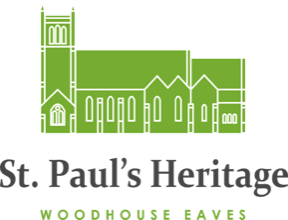
The Floor Tiles in St Paul's Church
by Claire Ayres

There are two sets of glorious Victorian ‘Gothic Revival’ encaustic tiles on the chancel floor (plus a few modern reproductions). Each tile has a maximum of two decorative colour patterns, made from inlaid clay of a different colour. The mosaic style layout of tiles of different shapes and sizes gives rise to the wonderful variety of patterns you see.

Chancel tiles, St Paul's

Back of tile with maker's marks
Both sets of the original "encaustic"tiles are stamped ‘W. Whetsone’ and ‘Coalville’. W. Whetstone was a company that existed from around 1860 until around 1877.
Encaustic’ decorated tiles had been hand-made for centuries but none of our tiles could have been laid when the church was built (1836); the company that made them was not yet formed and they were made by a later, partly automated, technique.
Local coal mining brought up clay as a by-product and was used to make bricks and tiles. Coal dust could be used to make the clay darker.
To construct the new access ramp to the chancel, the chancel floor was extended forward. During this process over 1,500 Victorian tiles were discovered, rescued, cleaned and re-laid on the new section of the chancel floor.

Rescuing the tiles under the carpet

Advertisement for works, previously known as W.Whetstone

The chancel tiles now